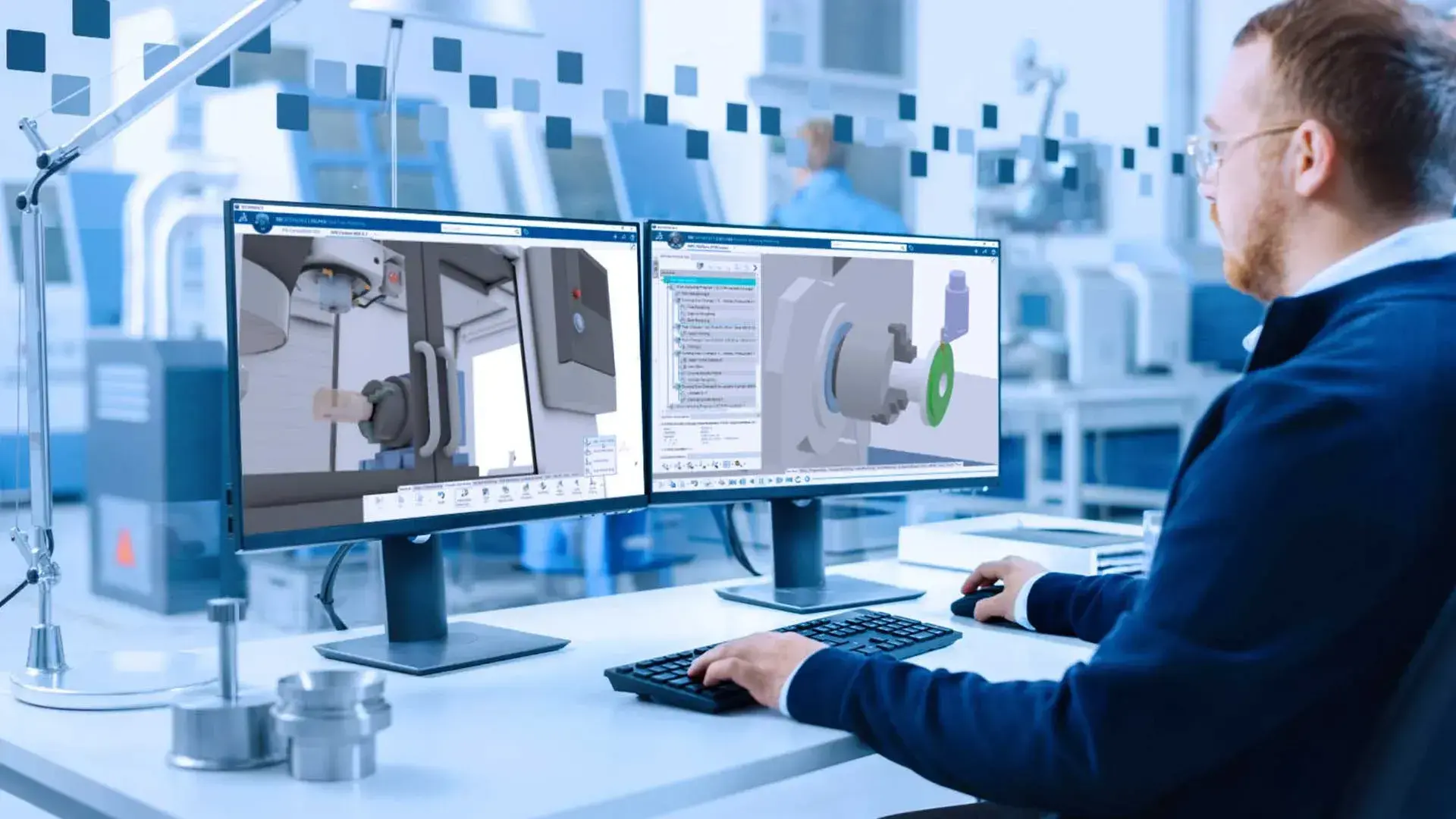Civil Engineer to BIM Modeller: An Expert's Guide to Boost Your Career Growth

Table of Contents
“Civil engineers should start learning BIM software and work with relevant companies that provide the opportunity to apply BIM to their projects. It will not only help grow their career but also make their work more efficient.”- Anwaar Khurshid
1. Can You Give a Brief Introduction — What is BIM Technology?
Sure. So, BIM is an acronym for Building Information Modelling. As the name suggests, BIM is a process using which you can access complete information about a building through a 3D model. Now, this three-dimensional model can be made using various BIM tools such as Revit, Dynamo, Tekla Structures, Advanced Steel, and many more. All details about a building’s design, construction, materials, and performance can be visualised with the help of BIM. This helps all project stakeholders anticipate and deal with any challenges well in advance.
2. What do You Think is the Scope of BIM in the AEC Industry?
I believe BIM is booming at an unprecedented rate. It is not just yet another trend, it is a revolution that's shaping the future of the AEC industry. BIM is helping us rethink the way we conceptualise, construct, and maintain buildings in a comprehensive and well-defined manner. Even though right now the application of BIM is scarce in India, I am sure that this technology will soon seep into the industry. Today, I see that so many young architects and civil engineers are learning BIM software because they understand that for them to work on global-scale projects — having BIM proficiency is a mandate. So, I think that the scope of BIM in the AEC industry will only increase in the near future as the mass career preferential shift from civil engineer to BIM modeller is very evident.
Read More : A Civil Engineer's Successful Journey to BIM
3. People Often Confuse BIM With Revit. Can You Please Differentiate Between the Two Concepts?
Yes, this is a very common misconception in the industry. The main difference between the two is that BIM is a methodology while Revit is software. However, people often use BIM and Revit interchangeably because Revit is one of the most widely used BIM software around the world.
To break down the two concepts for you, BIM includes a wide range of software, processes, and technologies that help in creating the 3D model of a project. On the other hand, Revit is a BIM software developed by Autodesk. Basically, Revit is just one tool within the broader realm of BIM methodology. Many other tools also come under the umbrella term of BIM —hese are ArchiCAD, Navisworks, Dynamo, BIM 360, to name a few
4. What Inspired You to Make the Career Switch from a Civil Engineer to BIM Modeller?
I studied civil engineering at the SRM Institute of Science and Technology in Chennai. After graduation, while I was looking for job opportunities, I spoke to a few seniors and realised that most of them were struggling to maintain a work-life balance. As civil engineers, your job profile primarily involves on-site work which can be very demanding.
So, I started surfing the internet for career paths I could pursue with a civil engineering degree and came across BIM. I was instantly drawn to it because I wanted to deviate from the conventional path of civil engineering but still practise in the construction industry. Also, I thought investing in technology upskilling would be a smart move because the construction industry is now becoming more tech-relevant. So, my career switch to BIM was a pretty calculated decision that I knew would give me better results in the future.

5. Why Should Civil Engineers Learn BIM? What are the Benefits of BIM in Career?
Learning BIM opened a new career path for me. For any civil engineer who wants to explore alternate careers in the construction industry, I would strongly recommend BIM. Taking into account the countless benefits of BIM, many countries like the United States, the United Kingdom, and the United Arab Emirates have made BIM a standard practice. In fact, even the Indian government is now making BIM usage a mandate in many public sector projects. So, learning BIM will make you future-relevant and give you an edge over your peers. Additionally, the gap between the industry demand and supply for BIM professionals is huge. Therefore, the pay package offered to them is also pretty generous.
6. Is it Possible to Make a Career Switch from Civil Engineer to BIM Modeller at Any Point in Your Professional Journey?
Yes. Whether you are an architect or a civil engineer, you can very easily transition your path to BIM at any stage in your career. But, the earlier you start the better. This is because it will be easier for you to understand and implement the technology. If you are a civil engineering student, I would say you must start upskilling right now and learn how BIM is used to have a great headstart for your long-term career. Look for online tutorials, videos, and theory on BIM to lay the foundation for your career. After graduation, you can either enrol in a full-time master's program on BIM or register for BIM certification programs such as the one offered by Novatr. Most of these courses are led by practising industry experts and also offer placement assistance.
7. What Does the Career Trajectory of a Fresher BIM-Proficient Civil Engineer Look Like?
Once you have a certificate or degree in BIM, you can apply for the role of a BIM modeller in various construction companies and public sector projects. After 2-3 years of experience, you can be promoted to the position of a BIM engineer or a BIM specialist —depending upon your work portfolio as a BIM modeller. With 6-7 years of expertise, you can expect to become a BIM coordinator and 10-11 years into the profession, you can climb up to the top of the hierarchy as a BIM manager.
Read more : What Jobs Can You Take Up As A BIM Professional?
8. How Much Does a BIM Modeller Make in Comparison to a Traditional Civil Engineer?
As a fresher BIM professional in the market, your average annual salary in India can be in the range of INR 3,00,000 - INR 4,00,000. After 1-2 years of career advancement, you can expect to earn anywhere between INR 4,50,000 - INR 6,00,000. However, your earning potential completely depends on your BIM proficiency, project portfolio, work experience, and area of work. If you shift base to the United States or Europe, you can expect generous salary packages that are at least 1.5x more than the package of a traditional civil engineer. All in all, transitioning from civil engineer to BIM modeller can be a smart choice for any AEC professional both in terms of career advancement and salary packages.

9. Can You Explain What Your Scope of Work Entails as a BIM Modeller? How Different is it From that of a Civil Engineer?
The primary difference between the work of a civil engineer v/s a BIM modeller is that the former does not get involved in the design and visualisation process of a project. They only implement the drawings provided to them by the architect’s office. If there are any issues in the drawing identified at the time of construction, a civil engineer communicates the same to the architects. Architects then rectify the design and resend a new set of drawings. This lengthy process impacts the project timeline as well as the cost in more ways than one.
But as a BIM modeller, you can avoid all that hassle by creating 3D construction models of a project. This helps you identify any difficulties that may arise on-site later during the construction phase. And even if there are any issues in the drawing, the interoperability is so fast because the architects are also using the same BIM model to make changes. Further, you can simulate the model for clash detection, load-bearing capacity, and overall building performance to ensure that the design is fully executable and functional. Thus, reducing errors and construction costs, which are some of the other benefits of BIM.
10. Can You Walk us Through Your Work Portfolio, Elaborating on the Aspect of BIM Modelling?
My journey from civil engineer to BIM modeller began after graduating when I started interning on a project for Jaipur Smart City Limited. There my scope of work mainly included on-site management and coordination. Alongside my internship, I had started learning BIM and I was applying for BIM-relevant roles in construction companies.
By the end of my internship, I was offered the role of a junior BIM engineer with Techture in Indore, Madhya Pradesh. In that profile, I was expected to create BIM models from 2D drawings. So, I worked with software such as Revit, BIM 360, and Naviswork to generate rebar modelling. Also, I was responsible for coordinating with multiple project stakeholders for conflict resolution and revisions.
Later, I moved to the role of a BIM modeller on the Planet Smart City project in Pune, Maharashtra. I am also presently working there. Here my work scope involves BIM modelling and co-ordination based on PTE standards with Autodesk Revit.

11. What Advice Would you Give to Fresh Civil Engineering Graduates Who are Interested in Learning BIM?
My advice for fresher professionals who want to transition from civil engineer to BIM modeller would be to first gain some experience in traditional civil engineering practices; so that you know how things work on the ground level. Along with that, you can invest time in learning BIM software like Revit or AutoCAD Civil 3D through courses, tutorials, or certification programs. Lastly, practice is key to becoming successful in any profession. So keep looking for opportunities to work on real projects or join internships where you can use BIM tools and apply BIM principles in practical settings.
Key Takeaways
Anwaar Khurshid has joined Novatr as an Industry Guide for our program on the BIM Professional Course for Civil Engineers. Learn from Anwaar and other industry experts from top construction firms, and embark on the civil engineer career change you have been looking for. The course is led by industry experts, Autodesk certified, and approved by RIBA standards. Its curriculum is devised based on the real-world applications of BIM for civil engineers that help you succeed as a professional. Enrolling on the course can be your stepping stone for steering your career from a civil engineer to BIM modeller.
Head over to the Resources section on our website to discover more inspiring stories about our course mentors and industry guides.
Explore our courses today!

 Thanks for connecting!
Thanks for connecting!

.png)
.png?width=720&height=158&name=BIM-C%20A%20(Course%20Banner).png)
.png)
.jpeg)





